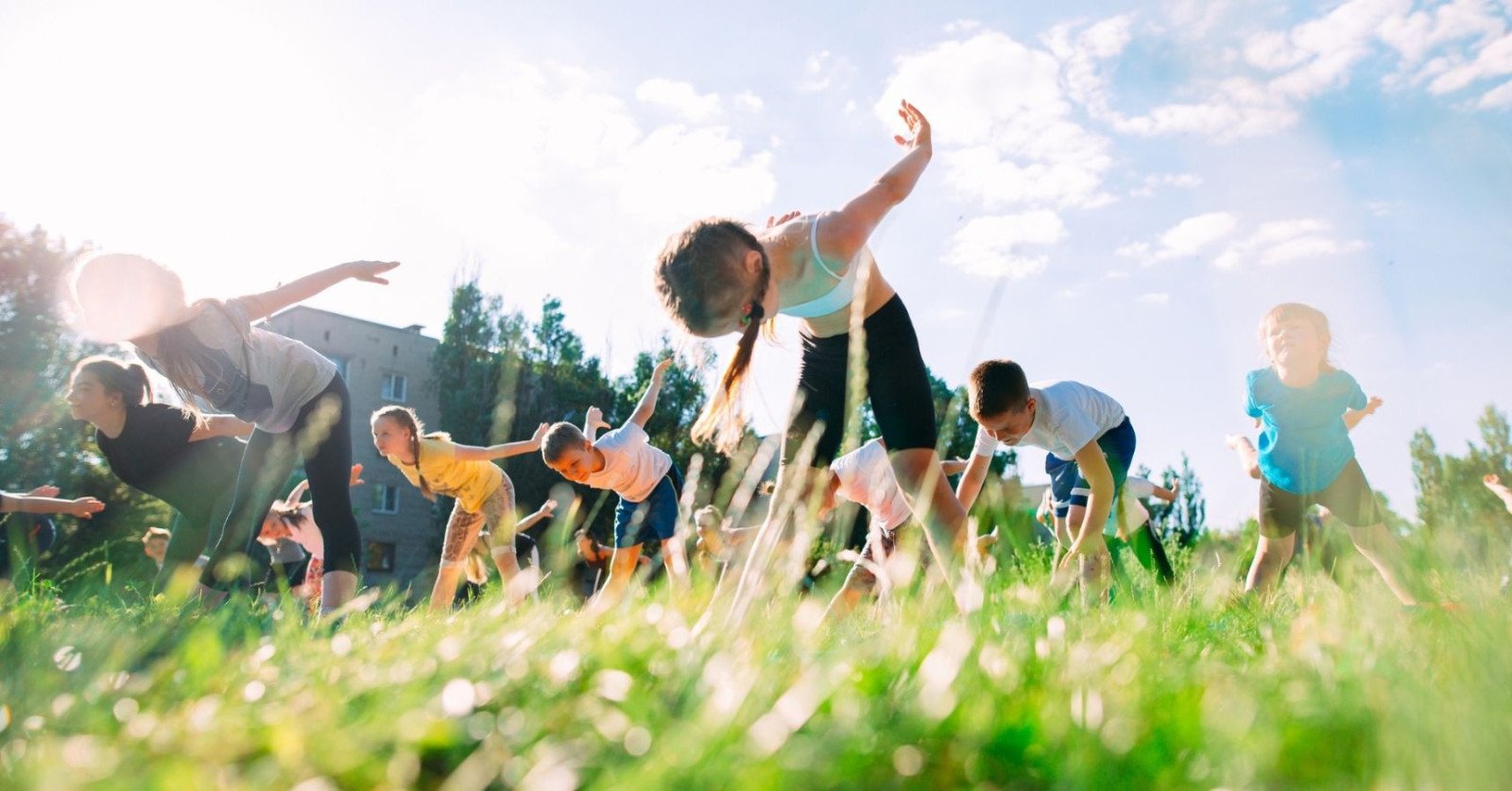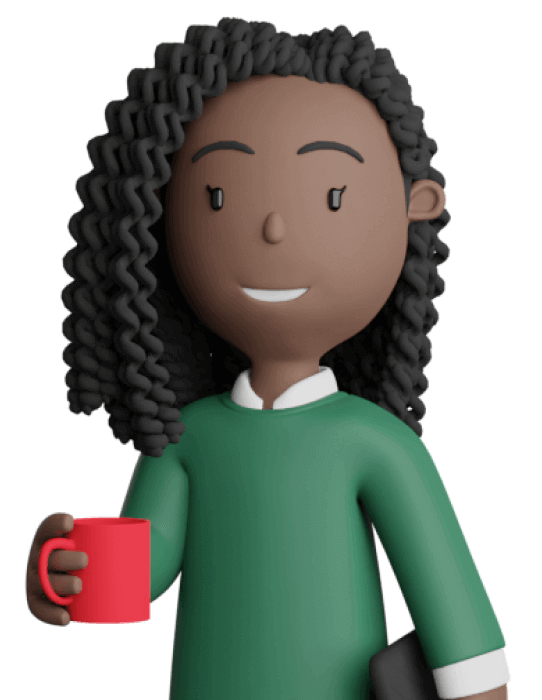Mindfulness for battling climate anxiety
Breathe and practice positive thoughts for eco-hope

Overview
In this activity students explore and participate in mindfulness breathing and yoga as strategies to help reduce climate anxiety. Students then meditate while listening to a story of a hopeful future with clean air and clean energy.
Instructions
What you'll need
- Laptop, projector and screen
- Video: Yoga PE - Heart | 10-Minute Yoga for Kids
- Comfy clothes like stretchy pants and t-shirts
- “Yoga poses in nature” student handout, one for each student
- “Meditation for hope” teacher handout, print one set
1. Start the activity by having a class discussion about how connecting with nature and taking action can help reduce climate anxiety and foster eco-hope and/or do the activity “Nature art for eco-hope”. 2. Continue the discussion by noting that another way to reduce climate anxiety is by breathing, yoga and meditation. Ask students to share if they have tried any of these ideas and if they helped. 3. Explain that these practices can help calm the mind, build physical and mental endurance, and deepen one's connection to the self, others, and nature, ultimately creating a more mindful approach to life and consumption that will also benefit the environment. Let’s breathe4. Share with students that you will lead them in a series of breathing exercises; box breathing and then belly breathing. Invite students to sit cross legged on the floor or a chair. 5. For box breathing draw a square on the board and explain you will count and lead them as they breathe in slowly imagining breathing up one side of the box, holding their breath across the top of the box, breathing out down the other side of the box and holding their breath along the bottom. You may choose to guide students by moving your hand around the box as you lead them through the exercise as follows: a. Inhale deeply and slowly through your nose 1, 2, 3, 4 as you visualize moving up the side of the box. b. Hold your breath 1, 2, 3, 4 as you visualize moving across the top of the box. c. Exhale slowly 1, 2, 3, 4 as you visualize going down the side of the box. d. Hold your breath 1, 2, 3, 4 as you visualize moving across the bottom of the box e. Repeat 7 to 10 times. 6. Have students stand up and shake or dance on the spot and then share how they feel. Share with students they can create a ‘toolbox’ of various ways to calm and ground themselves when they feel overwhelmed. 7. Now try the belly breathing technique. Invite students to sit cross legged on the floor or a chair. Practice with students first and then lead them through the exercise as follows. a. Place one hand on your chest and the other on your abdomen, just below your rib cage. b. Breathe in slowly through your nose 1, 2, 3, 4 feeling your belly expand. Keep your chest still as your hand on your abdomen rises. c. Slowly exhale 1, 2, 3, 4 through slightly pursed lips as your belly empties of air. d. Repeat 7-10 times. 8. Again, have students stand up and shake or dance on the spot and then share how they feel. It’s good to have several different breathing exercises in our toolboxes. Breathing exercises involve slow, controlled breaths with different phases of inhalation and exhalation to signal the body to relax and calm our nervous systems. Let’s do yoga9. Ask students to describe what yoga is and it’s benefits. They may share that it’s a series of poses or shapes, stretches, and movements that improve flexibility, strength, and balance. They may also share that it is a way of preparing our bodies to meditate which can bring stillness and inner peace particularly can be very helpful if we are anxious. Tell students we will practice some yoga with Adriene and her dog Benji. Invite students to spread out in the classroom, pull up the 10-minute Video: Yoga PE - Heart | 10-Minute Yoga for Kids and follow along with Adriene. 10. Taking a set of the “Yoga poses in nature” and weather permitting take the class outside into nature to lead them in some more yoga poses. 11. Start by showing students the picture of the first pose: Mountain Pose. Read out the instructions for students to follow and/or demonstrate the pose. Continue through the eight poses in the set. 12. Continue outside with a seated meditation or head back into the classroom. For the meditation, refer to “Meditation for hope” teacher handout. 13. Finish the activity by inviting students to share how they feel and/or write a short journal entry. 14. As a follow up, have students write their own meditation story that describes a calm, peaceful environment free of eco-anxiety. |
Modify or extend this activity
- Practice a mindful breathing exercise daily with the class.
- Take students on a mindful walk in the neighborhood finding a natural rhythm of steps and breaths to align mind, body and breath encouraging a sense of calm.
- Have students create their own story of a future of clean, renewable energy and clean air
Curriculum Fit
Physical health and education (4-7)Big ideas
Content
Curricular Competency
English Language arts (4-7)Big ideas
Content
Curricular competencies
|
Assessments
- Assess students’ participation in the breathing and yoga exercises.
- Assess students' understanding of breathing, yoga, and meditation as methods for self-regulation and future preparedness.
- Assess students’ focus and reflection during the guided meditation.
Teaching Notes
Understanding climate anxiety
Excerpt from the Mental Health and Climate Change Alliance
“Climate change isn’t just an environmental issue—it’s also an emotional one for many young people. Children and teens today are acutely aware of climate threats, and this awareness often comes with intense feelings. In a recent international survey of 10,000 youth (ages 16–25), nearly 60% said they feel “very” or “extremely” worried about climate change, with almost half saying these worries negatively affect their daily lives. Canadian youth echo these concerns: in one national study, 73% of young Canadians said the future feels “frightening” due to climate change, and nearly half believed “humanity is doomed”. Over three-quarters reported that climate change impacts their overall mental health, and 4 in 10 said their climate-related feelings have a negative effect on their daily life. Clearly, climate change is no distant abstraction for our kids – it’s a real source of stress, anxiety, and even despair in their lives”.
Building eco-hope
Strategies to build eco-hope include connecting with nature and your community, focusing on controllable actions and small wins, channeling emotions into positive action, and educating yourself and others about environmental issues. Engage with inspiring environmental campaigns, join local groups, practice self-compassion, and limit overwhelming climate news to avoid burnout.
BC Hydro takes action on climate change
BC Hydro is taking action on climate change by working within the provincial CleanBC plan to increase the supply of clean electricity, improving energy efficiency, and reducing the carbon impact of its own operations. Key initiatives include adding renewable energy sources through calls for power, investing significantly in energy efficiency programs for customers, and reducing greenhouse gas (GHG) emissions from its own buildings, fleet, and equipment.
Breathing techniques
Go to Breathing techniques to explore a variety of breathing exercises







